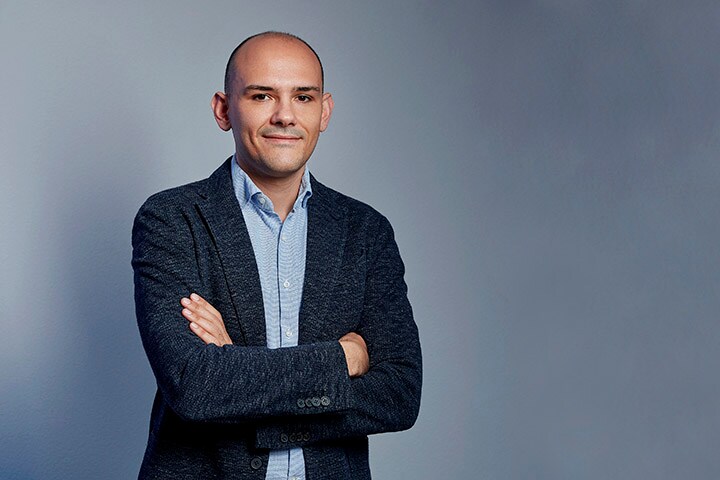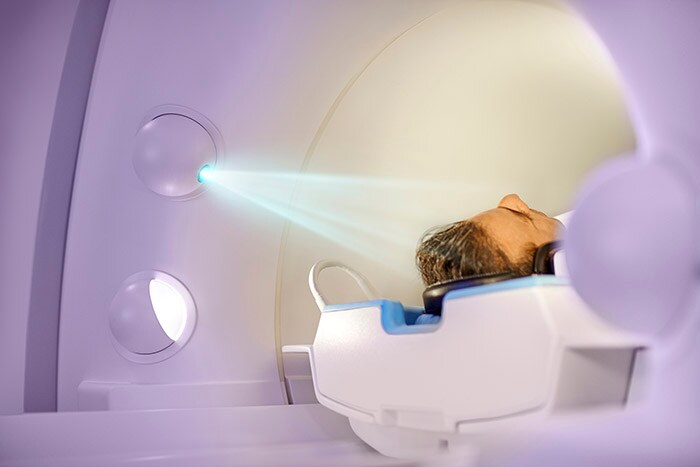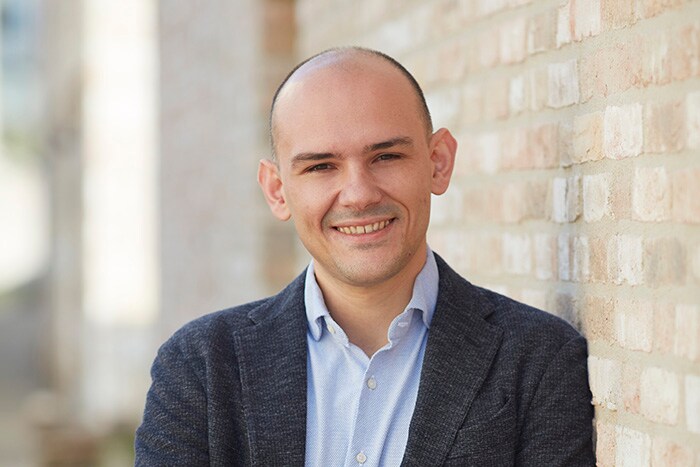Blog
Share on social media
"We are just scratching the surface of Artificial Intelligence in healthcare"
He considers Italian to be his first language; programming language C++ comes in second. Nicola Pezzotti seemed destined to become a computer scientist, after his father taught him the basics of programming as a young child. At the age of 13 he got his first freelance programming assignment. As a Senior Scientist AI at Philips, his job is to develop new artificial intelligence methods that improve healthcare, are applicable in practice, and easy to understand for humans. Why is this important? "AI is rapidly improving and becoming more sophisticated. We can only make use of it in a reliable way if we can understand what a machine learning model does, why it makes decisions the way it does. Moreover, the development of new and powerful models is an expensive and time-consuming process, often involving a trial and error approach. That means that little bits are changed to improve the performance. To have models that works in every condition, and to develop new models more efficiently, it is important to have a clear understanding of the computations that are performed; hence the importance of explaining AI models."

When did you first start thinking about making AI understandable? "During my PhD. My research was about using algorithms to reduce huge amounts of data to smaller, but equally informative, sets of data and visualizations. The key challenge here is the incredibly large quantity of data and the need to not reduce information or functionality."
The key challenge here is the incredibly large quantity of data and the need to not reduce information or functionality.
Nicola Pezzotti
Senior Scientist AI
For what purpose? "My research was about recognizing and highlighting specific data in large datasets. I tried to identify previously unknown cell types within a large sample of cells. For the project, researchers took a sample from a patient's body which contains a large number of cells. Each cell has many characteristics; in this case how they interact with different antibodies. Imagine a spreadsheet with thousands of rows and millions of columns. That is super tough to analyze. We call this high-dimensional data and it is like finding a needle in a haystack. With traditional methods it would be impossible to identify these very rare immune cells in such a large dataset. In my research, I have used a technique to simplify the way this information is presented to researchers or clinicians, without losing relevant information or functionality. The result of this research was even published in Nature Communications."
Imagine a spreadsheet with thousands of rows and millions of columns. That is super tough to analyze. We call this high-dimensional data and it is like finding a needle in a haystack.
Nicola Pezzotti
Senior Scientist AI
It sounds like the importance of such technologies will only increase when AI becomes more complex. "Absolutely. Such techniques can help to understand why AI does what it does. At Philips, I am working with AI to improve the acquisition of MRI images. However, we need to develop new AI models that do not only deal with simple images, but with the raw data coming from the scanner –radiofrequency readings. This extra complexity is crucial in achieving top performance and reliability, but it increases the burden on the AI developers to fully understand the computations that are performed. Only if they understand what actually happened in the machine learning model, they learn from it and improve."

Together with colleagues at Philips you participated in the FastMRI challenge, an initiative of Facebook AI Research and NYU Langone Health to shorten the time needed to make an MRI scan. How did that happen? "Back in 2019, we were challenged to participate and win. Eventually there were several teams in which Philips participated and we won all the challenge tracks. In our team we worked with the Leiden University Medical Center, where I collaborated during my PhD. I think this was a great example of what good can come out of innovation through open collaboration; not only did we team up with LUMC, but also with the University of Amsterdam (UvA), Amsterdam University Medical Center (Amsterdam UMC) and Radboud University. It is not just the collaboration in itself, but working together with a purpose of improving the life of patients. An MRI scan can take a lot of time, and every time you are in the scanner and you move, you might ruin the outcome. If you can reduce the time it takes to generate an image, there is a direct benefit for the patient. And for hospitals, it means that they can treat more patients and work more efficiently."
If you can reduce the time it takes to generate an image, there is a direct benefit for the patient. And for hospitals, it means that they can treat more patients and work more efficiently.
Nicola Pezzotti
Senior Scientist AI
Do you also 'team up to win' with external partners in your daily work? "Certainly. Actually, I have been appointed as a part-time assistant professor at the Eindhoven University of Technology thanks to the Kickstart AI platform, which is a collaboration between Ahold Delhaize, ING, KLM, NS and Philips. The ambition of this initiative is to boost the development of AI in the Netherlands. In my role, I will focus on the development of powerful and explainable AI, which is totally in line with my research experience.

Also, I work directly with hospitals such as LUMC and Catharina to apply AI in clinical research, for example to treat coronary artery disease. This will be done as part of the e/MTIC collaboration. e/MTIC is a very valuable partnership, because it allows me to do fundamental research in the university and directly have access to clinical practice in one of the hospitals around Eindhoven." What will the role of AI be in the future of healthcare? "There is so much potential, I am convinced that we are just scratching the surface. The more you can embed AI, the more value you will be able to extract from the technology. While some processes can be automatized by AI, those are often the less inspiring ones that are actually causing high burnout rates among the medical staff. AI will leave the doctors with more time to perform the work they care about, taking care of their patients, using their brains that can be enriched by the information condensed by the AI. In a way, you can compare AI with a smartphone; you may have all the knowledge of the world at the tip of your finger, it doesn't make you smarter. It is a tool, and you can use it to improve your knowledge. AI is not different; it enriches your senses."
AI will leave the doctors with more time to perform the work they care about, taking care of their patients, using their brains that can be enriched by the information condensed by the AI.
Nicola Pezzotti
Senior Scientist AI
